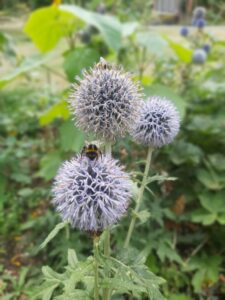 Why the Biodiversity Crisis matters as much as Climate Change and what we can do locally to make a difference.
Why the Biodiversity Crisis matters as much as Climate Change and what we can do locally to make a difference.
On Mon 26 Sep Soroptimist International St Albans and District hosted a truly inspiring meeting on Zoom about the Biodiversity Crisis and what we can do to improve the situation locally alongside Climate Change. It was great to be able to welcome so many guests from other Soroptimist Clubs, local community groups and Soroptimist friends.
 Helen Byrne welcomed everyone including our speakers Tim Hill, Conservation Manager at the Herts & Middlesex Wildlife Trust www.hertswildlifetrust.org.uk/ and Nadia Bishara who has been leading the work of the St Albans group Wilderhood Watch https://wilderhoodwatch.org/
Helen Byrne welcomed everyone including our speakers Tim Hill, Conservation Manager at the Herts & Middlesex Wildlife Trust www.hertswildlifetrust.org.uk/ and Nadia Bishara who has been leading the work of the St Albans group Wilderhood Watch https://wilderhoodwatch.org/
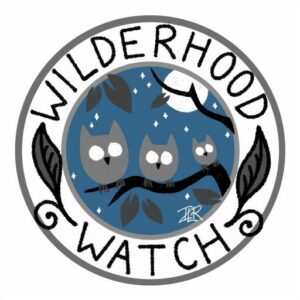 This year Helen is sharing the presidency of the St Albans Soroptimist Club as well as facilitating the great work of the Club’s Planet Team. Club Members have all learnt a great deal about the Climate Crisis and have been working to reduce our carbon footprints and our use of plastics and we continue to look for other ways we can take action including advocating for Net Zero. We are now keen to turn to the other major Crisis in our natural world – the Biodiversity Crisis. What does it mean for us and for our planet and what can we individually and collectively do about it? Helen said “We are hoping that this evening’s session will go a long way to answering those questions at least for our own locality and that we will finish the meeting with more knowledge so we can share the message and with some clear actions which we can take individually and together to help make a difference.”
This year Helen is sharing the presidency of the St Albans Soroptimist Club as well as facilitating the great work of the Club’s Planet Team. Club Members have all learnt a great deal about the Climate Crisis and have been working to reduce our carbon footprints and our use of plastics and we continue to look for other ways we can take action including advocating for Net Zero. We are now keen to turn to the other major Crisis in our natural world – the Biodiversity Crisis. What does it mean for us and for our planet and what can we individually and collectively do about it? Helen said “We are hoping that this evening’s session will go a long way to answering those questions at least for our own locality and that we will finish the meeting with more knowledge so we can share the message and with some clear actions which we can take individually and together to help make a difference.”
 Tim Hill spoke first – his presentation was titled “An integrated approach to addressing the climate and nature crises”. He explained how climate change and the loss of biodiversity are intrinsically linked.
Tim Hill spoke first – his presentation was titled “An integrated approach to addressing the climate and nature crises”. He explained how climate change and the loss of biodiversity are intrinsically linked.
The presentation is summarised below and please download the PDF version here to see the whole presentation: SISTA HMWT 29 Sept 22 Tim Hill
The HMWT is a charity with 22,000 members. Its work is to protect habitats and the wildlife they support. It has 44 nature reserves and wider countryside providing places where people can experience, enjoy and learn more about wildlife.
 The Hertfordshire’s State of Nature Report assessed over 10,000 different species and how their status changed between 1970 and 2020 https://www.hertswildlifetrust.org.uk/stateofnature This report is deeply shocking revealing that in the last 50 years in Hertfordshire alone 76 species became extinct, 1446 species are now of conservation concern – we have a nature crisis!!
The Hertfordshire’s State of Nature Report assessed over 10,000 different species and how their status changed between 1970 and 2020 https://www.hertswildlifetrust.org.uk/stateofnature This report is deeply shocking revealing that in the last 50 years in Hertfordshire alone 76 species became extinct, 1446 species are now of conservation concern – we have a nature crisis!!
Hertfordshire County Council declared a climate emergency in July 2019 (St Albans did too). Herts CC published a strategy and action plan in 2020 to make Hertfordshire cleaner, greener and more sustainable https://www.hertfordshire.gov.uk/microsites/sustainable-hertfordshire/sustainable-hertfordshire.aspx#
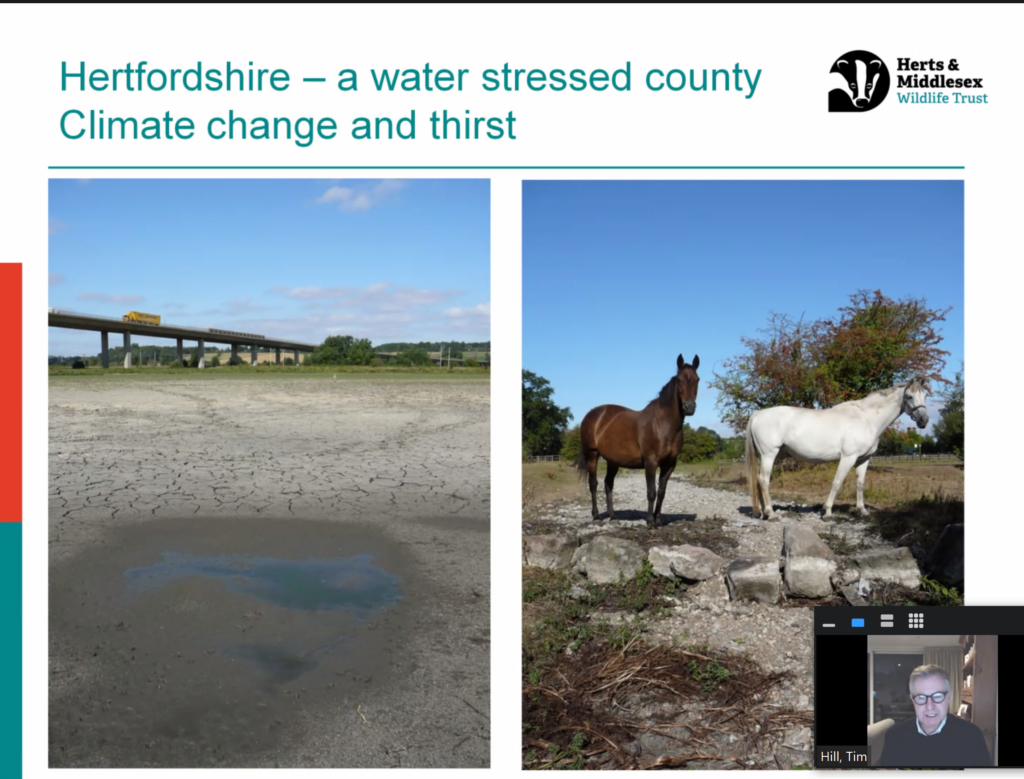 The species in woodlands and wetlands have decreased massively in the same period. Hertfordshire is a water stressed county caused by climate change and too much water being taken out of the natural water supplies. Wetlands don’t get chance to recover between droughts anymore. We have chalk streams in Herts which are a very rare endangered habitat.
The species in woodlands and wetlands have decreased massively in the same period. Hertfordshire is a water stressed county caused by climate change and too much water being taken out of the natural water supplies. Wetlands don’t get chance to recover between droughts anymore. We have chalk streams in Herts which are a very rare endangered habitat.
We need a joined-up solution – Tim gave us two important quotes: “The science is now clear that biodiversity loss and climate change are inextricably linked and to tackle one, we need to tackle the other.” From a 2019 global assessment report on biodiversity and ecosystem services. “Carbon capture and storage is the only hope for mankind” – Sir David King, former chief scientist to the UK government. This is HMWT’s Call to Action – to create more, bigger, better and connected wild places. HMWT is calling for at least 30% of our land and water to be connected and protected for nature’s recovery by 2030 – this means providing 20,000ha more in Herts for nature. HMWT has started on “Putting Nature Back 2030 Ponds by 2030” with water voles in all of Hertfordshire’s rivers by 2030 (some success on the River Ver already). Creating amenity spaces for nature, capturing carbon through habitat diversity (wild flowers with long roots can sequester carbon and with mower blades raised slightly they can thrive in lawns). Wild Stevenage, Wild Dacorum and Wilder St Albans are already making a difference – this can easily be rolled out wider.
If you have a garden you can do 5 things – plant a tree, dig a pond, increase wildflowers, create deadwood habitats, make a hole in your fence to create routes between properties for hedgehogs and other small mammals.
#WilderStAlbans is a 2 year programme with HMWT working with St Albans City & District Council to increase the habitats across St Albans and the wildlife they support by coordinating a programme of practical action by the community (including working with our second speaker from Wilderhood Watch St Albans). Read more about Wilder St Albans and watch the video: https://www.hertswildlifetrust.org.uk/wilderstalbans https://www.youtube.com/watch?v=OTCtC2Kpwds
Tim took some great questions from the group:
Q: Is “no mow” working? A: it was started in Stevenage in 2010. The wild/now mow areas are monitored to give data to show success – within 2 years diversity increased dramatically.
Q: Do bee hotels work? Do they need to be cleaned? A: just creating opportunities for wild life is always a good thing – bee hotels don’t last forever and if the environment isn’t right the bees move on somewhere else.
Q: I don’t want to change political parties but want to support a green agenda – what should I do? A: join a conservation organisation – e.g. RSPB, Wildlife Trust, Woodland Trust, then when you write to your MP to raise issues you can say you are a member which carries weight because these are big organisations with many thousands of members.
Q: Has HMWT considered reintroducing beavers? They are incredible creators of wildlife habitat. A: they are amazing – much better at managing habitats than humans. HMWT is looking into introducing them but it is complicated – to find out more you can visit Spains Hall Beavers in Essex – https://www.spainshallestate.co.uk/nfm_beavers
 Anna Barrett introduced our next speaker by quoting Rob Hopkins “if we wait for the government it will be too late… if we act as individuals it will be too little… if we act as communities it might just be enough…”. Anna has been working with Nadia Bishara from the St Albans group Wilderhood Watch https://wilderhoodwatch.org/ in her own community in Chiswell Green including the rewilding of Greenwood URC where we hold our Soroptimist meetings. The work of Wilderhood Watch is all about getting local communities to work together to collectively make a difference to the environment. It was launched in 2019 at the Sustainability Festival in 2019.
Anna Barrett introduced our next speaker by quoting Rob Hopkins “if we wait for the government it will be too late… if we act as individuals it will be too little… if we act as communities it might just be enough…”. Anna has been working with Nadia Bishara from the St Albans group Wilderhood Watch https://wilderhoodwatch.org/ in her own community in Chiswell Green including the rewilding of Greenwood URC where we hold our Soroptimist meetings. The work of Wilderhood Watch is all about getting local communities to work together to collectively make a difference to the environment. It was launched in 2019 at the Sustainability Festival in 2019.
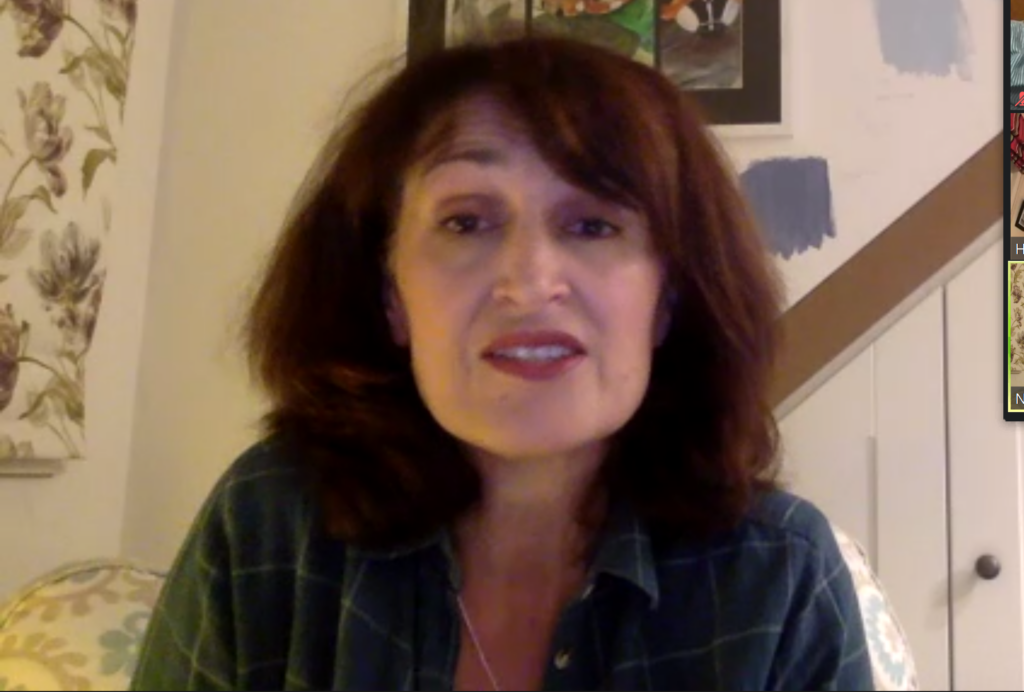 You can download Nadia’s presentation here: SISTA WW presentation 26 Sep Compressed and you can watch a recording of the presentation on Zoom by clicking here https://youtu.be/T4qn5Ywhi1U (with apologies for missing the start).
You can download Nadia’s presentation here: SISTA WW presentation 26 Sep Compressed and you can watch a recording of the presentation on Zoom by clicking here https://youtu.be/T4qn5Ywhi1U (with apologies for missing the start).
Nadia said that the group had started by creating green corridors – joining gardens – Project “Hedgehog Street” making gardens hedgehog friendly with 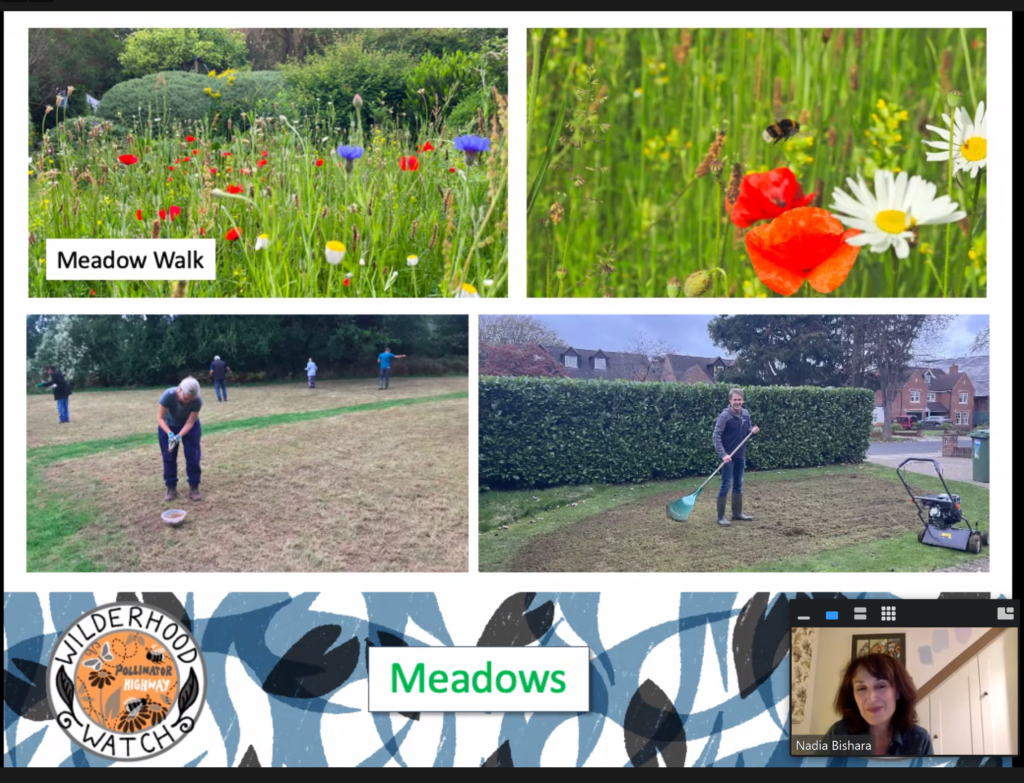 access between gardens. The group share vegan recipes and published a plant guide to help people choose pollinator-friendly plants. They are creating a pollinator highway and have plant swaps. They have created meadows and have a meadow walk. There are “Buzz Stops” – where wildlife planting has been carried out around bus stops. The group has found working with Wilder St Albans (which we heard about earlier) really helpful. They have worked with the Council so that they just mow areas with wild flowers twice a year. George St Canteen were awarded Wildlife Gardening Champions and the event “World of Trees” at St Albans Museum and Gallery got even more neighbours and schools on
access between gardens. The group share vegan recipes and published a plant guide to help people choose pollinator-friendly plants. They are creating a pollinator highway and have plant swaps. They have created meadows and have a meadow walk. There are “Buzz Stops” – where wildlife planting has been carried out around bus stops. The group has found working with Wilder St Albans (which we heard about earlier) really helpful. They have worked with the Council so that they just mow areas with wild flowers twice a year. George St Canteen were awarded Wildlife Gardening Champions and the event “World of Trees” at St Albans Museum and Gallery got even more neighbours and schools on  board with the projects. Soroptimist Anna Barrett handed out sunflower seeds to Members and anyone involved with Greenwood URC for the fun sunflower challenge this year. By 2022 they have lots of projects – so that people can pick what interests them and have fun with their community at the same time. Anyone in St Albans can get involved – talk to your neighbours and get a few of them to join you in choosing a project your street can work together on. Over time other neighbours will join in. Wilderhood St Albans were busy at the Sustainability Festival again this year of course – and will be at the Greenwood Park Wildlife Festival on 15 Oct 11am to 3.30pm.
board with the projects. Soroptimist Anna Barrett handed out sunflower seeds to Members and anyone involved with Greenwood URC for the fun sunflower challenge this year. By 2022 they have lots of projects – so that people can pick what interests them and have fun with their community at the same time. Anyone in St Albans can get involved – talk to your neighbours and get a few of them to join you in choosing a project your street can work together on. Over time other neighbours will join in. Wilderhood St Albans were busy at the Sustainability Festival again this year of course – and will be at the Greenwood Park Wildlife Festival on 15 Oct 11am to 3.30pm.
Q: what is the connection between Wilderhood Watch and Wilder St Albans? A: they are separate and Wilderhood was supported by Wilder St Albans because the Wilderhood projects make a big positive contribution to the work of Wilder St Albans.
Q: what RHS course did Nadia take? A: it was an online one and she will send details
Q: Who maintains meadow spaces and how can you rewild them? A: find out who maintains them and ask them.
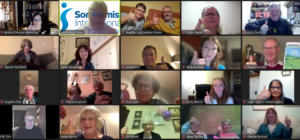 Helen Byrne then closed the meeting, thanking everyone for coming. She said we were all blown away by what we had heard from our 2 speakers and we all had a lot to take on board and work on. Everyone gave the event a big thumbs up – see photo!
Helen Byrne then closed the meeting, thanking everyone for coming. She said we were all blown away by what we had heard from our 2 speakers and we all had a lot to take on board and work on. Everyone gave the event a big thumbs up – see photo!
We had some great feedback in the Zoom chat including “Thanks for two wonderful, practical talks which were totally inspiring!” and “Massive thank you!”
Optional donations were asked for when people booked to support the Herts and Middlesex Wildlife Trust there was no pressure for a donation because the event was an opportunity for more people to understand the seriousness of the situation and to take action. If anyone feels they would like to make a donation please click here for more information sigbi.org/st-albans-and-district/donate/ We will publish the total here soon.
Ahead of the event, the Club’s Communications Officer, Jane Slatter was interviewed on St Albans local radio Mix FM 92.6 mix926.com by Elly O’Meara. Thanks to Elly and also to Jackie Sampson for including the interview on her show. In the interview Jane is also promoting our Orange the World Campaign https://sigbi.org/st-albans-and-district/2022/orange22/

